14 Weird But Wonderful Pachycereus Cacti to Obsess Over
Are you ready to be amazed by some of the most peculiar and outrageous cacti on the planet? Pachycereus cacti are truly a marvel of nature, with their towering heights, bizarre shapes, and incredible longevity. From massive columnar giants to candelabra-like clusters, these weird but wonderful specimens will have you utterly obsessed. Get ready to embark on a journey through 14 of the most jaw-dropping Pachycereus varieties that will blow your mind!
Contents
- 1 About Pachycereus Cacti
- 2 Types of Pachycereus Cacti
- 2.1 Pachycereus fulviceps
- 2.2 Pachycereus grandis
- 2.3 Pachycereus hallianus
- 2.4 Pachycereus hollianus
- 2.5 Pachycereus lepidanthus
- 2.6 Pachycereus marginatus (Mexican Fence Post Cactus)
- 2.7 Pachycereus militaris
- 2.8 Pachycereus pecten-aboriginum (Indian’s Comb)
- 2.9 Pachycereus pringlei (Mexican Giant Cactus)
- 2.10 Pachycereus ruficeps
- 2.11 Pachycereus schottii (Whisker Cactus)
- 2.12 Pachycereus tetetzo
- 2.13 Pachycereus thurberi
- 2.14 Pachycereus weberi
- 3 How to Grow and Care for Pachycereus
- 4 Propagating Pachycereus Cacti
- 5 How Fast Do Pachycereus Grow?
About Pachycereus Cacti
Native to Mexico, Pachycereus are large shrubby cacti that can grow up to around 65 feet tall with stout stems reaching around 10 feet in diameter. Considered among the longest cactus plants, their distinguishing features include large branching arms, ribbed columnar stems, and a magnificent tree-like appearance.
Types of Pachycereus Cacti
Pachycereus fulviceps
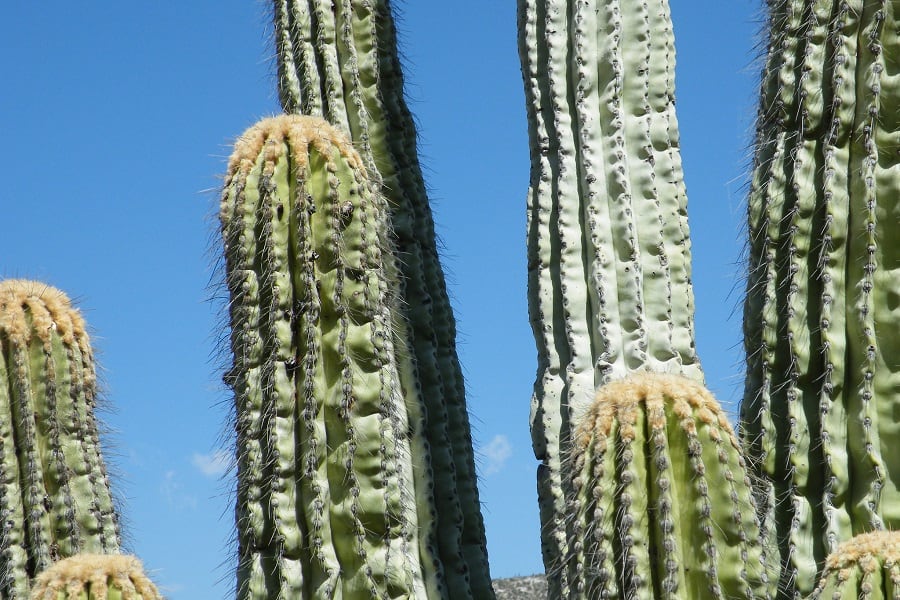
Pachycereus grandis
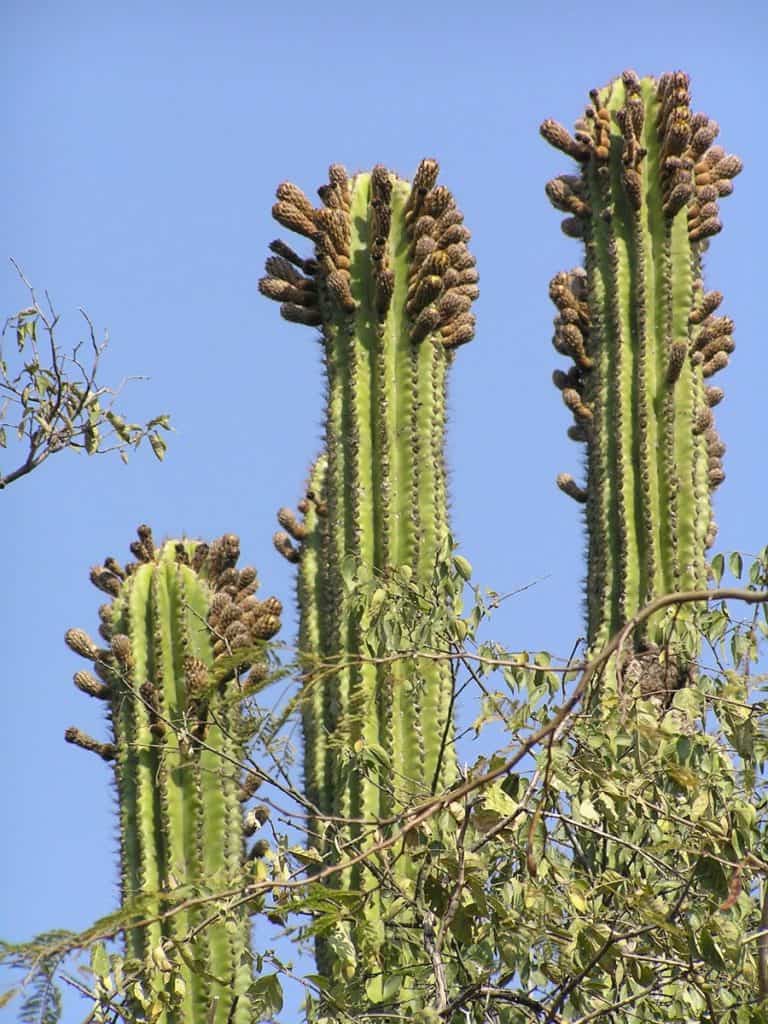
Pachycereus hallianus
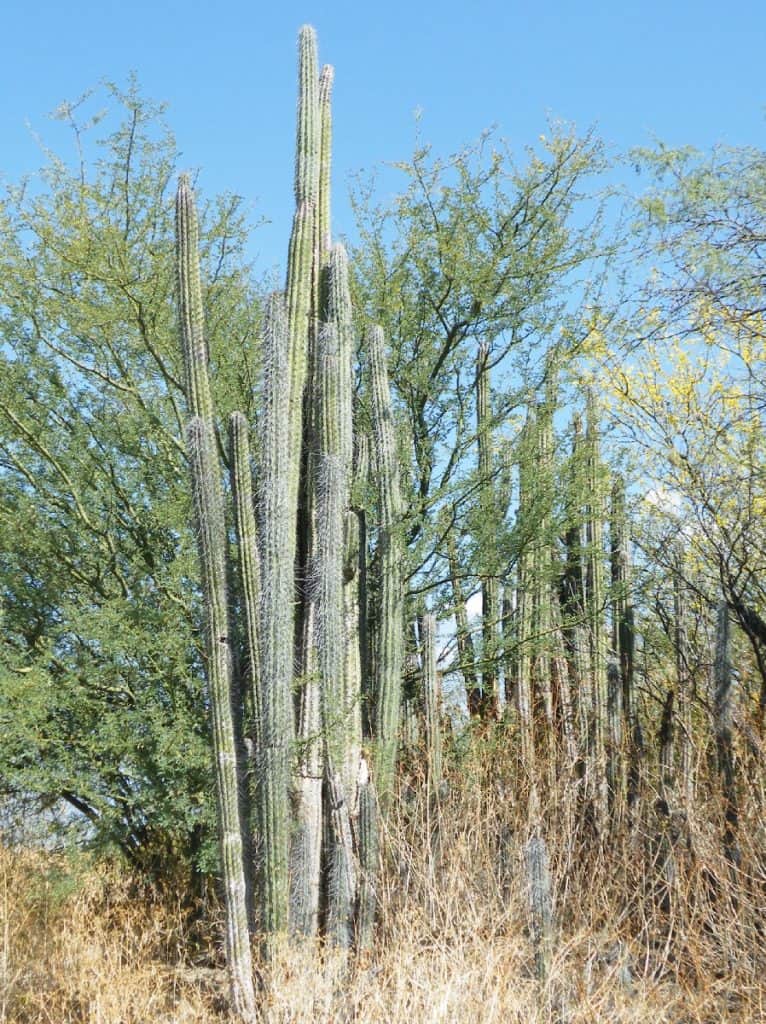
Pachycereus hollianus
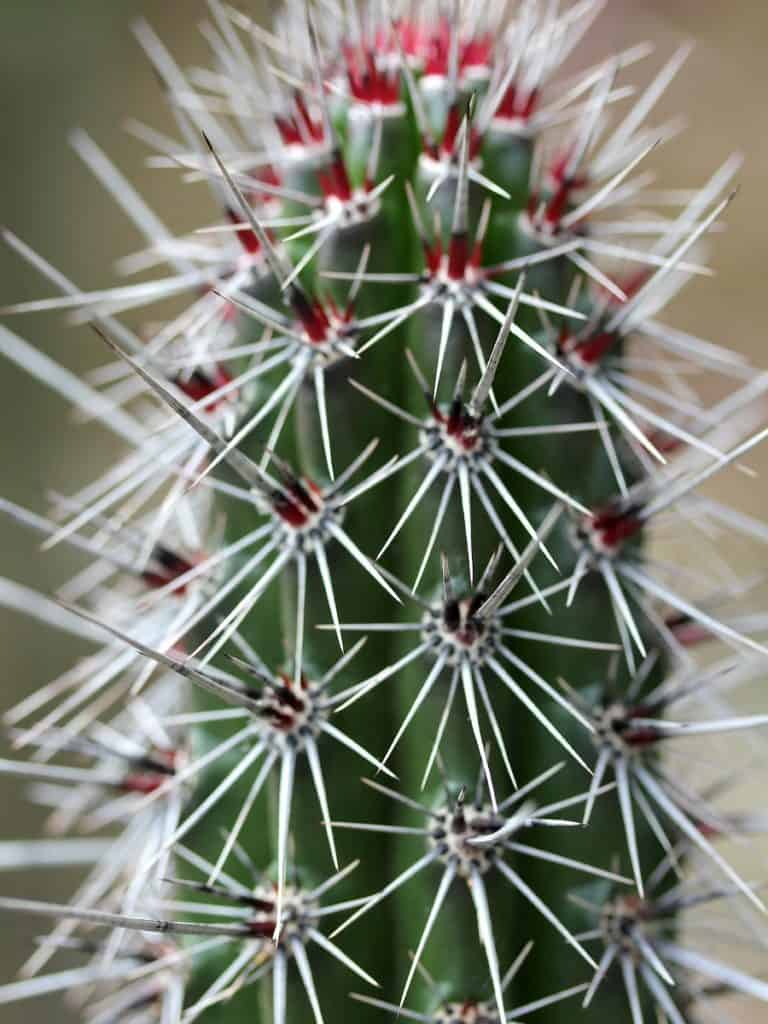
Pachycereus lepidanthus

Pachycereus marginatus (Mexican Fence Post Cactus)
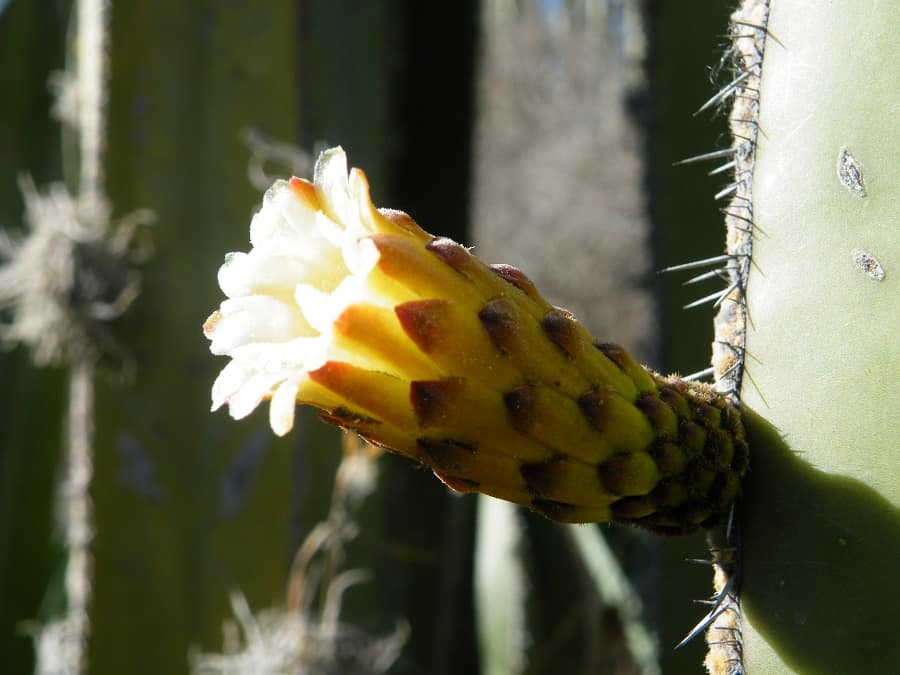
Upright and clumping, this stiff and imposing columnar cactus has unbranched stems from the base. In the wild it can reach up to 49 feet tall, but when cultivated, it typically grows up to 13 feet or more.
Pachycereus militaris
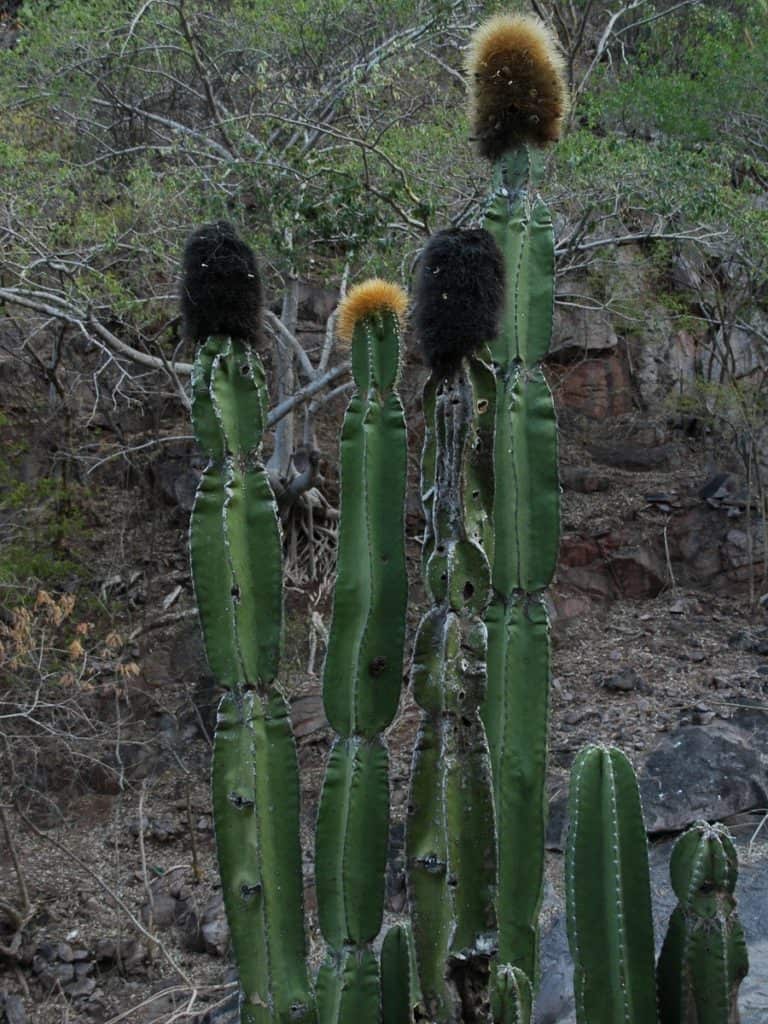
A true tree-like cactus reaching 16-20 feet high with numerous erect branches featuring a special terminal cap (cephalium) from which small flowers emerge. When the stem grows around 20 feet tall, each shoot tip converts into a dense head of spirally arranged tubercles that produce flowers protected by numerous long, golden bristles.
Pachycereus pecten-aboriginum (Indian’s Comb)
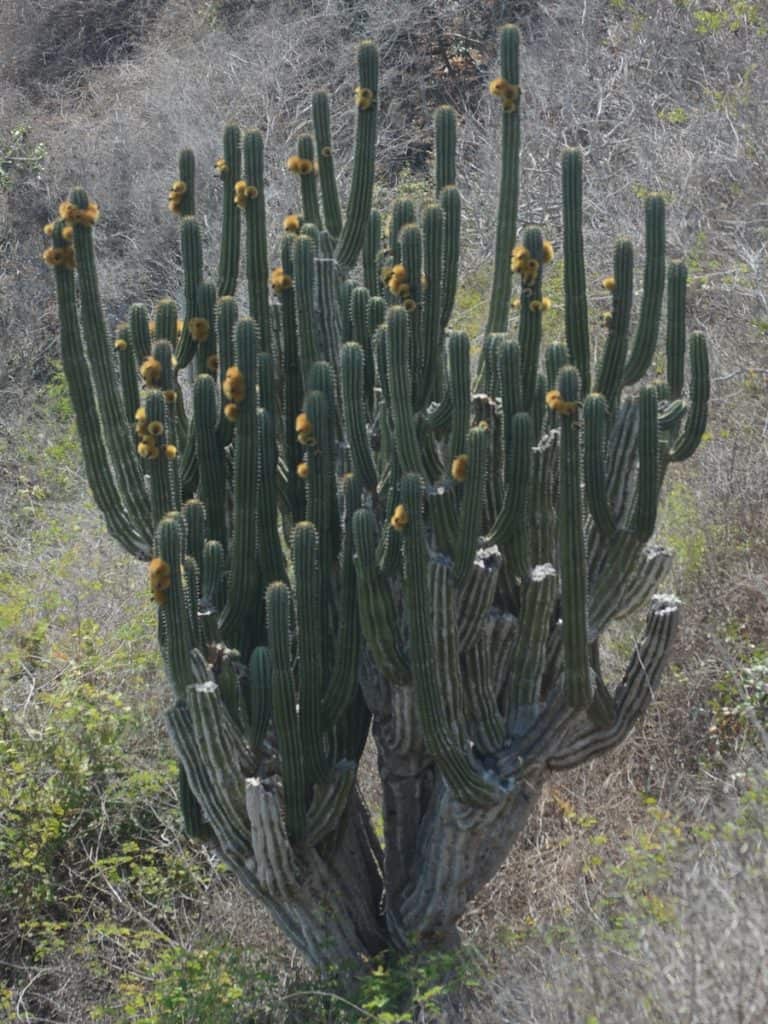
One of the most massive columnar, tree-like cacti in the world, often reaching 23-49 feet tall! The trunk is short but immense, frequently branching within 2-10 feet from the base into many colossal arms. This spectacular species rivals the size and majesty of the famous Saguaro cactus.
Pachycereus pringlei (Mexican Giant Cactus)
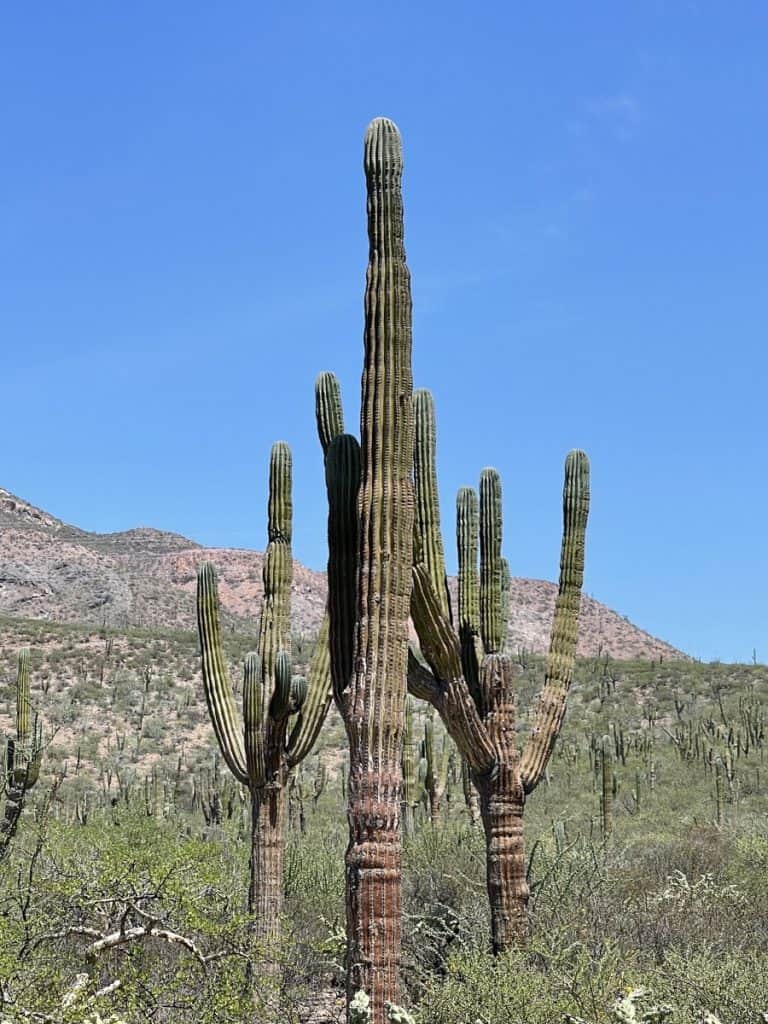
Part of the renowned Sonoran Desert cacti group that includes the saguaro and organ pipe cactus, the Pachyrereus pringlei occasionally reaches nearly 65 feet tall and 16 feet wide, with a trunk diameter of 6-7 feet and weighing several tons! It may live over 200 years and could be the largest cactus species.
Pachycereus ruficeps
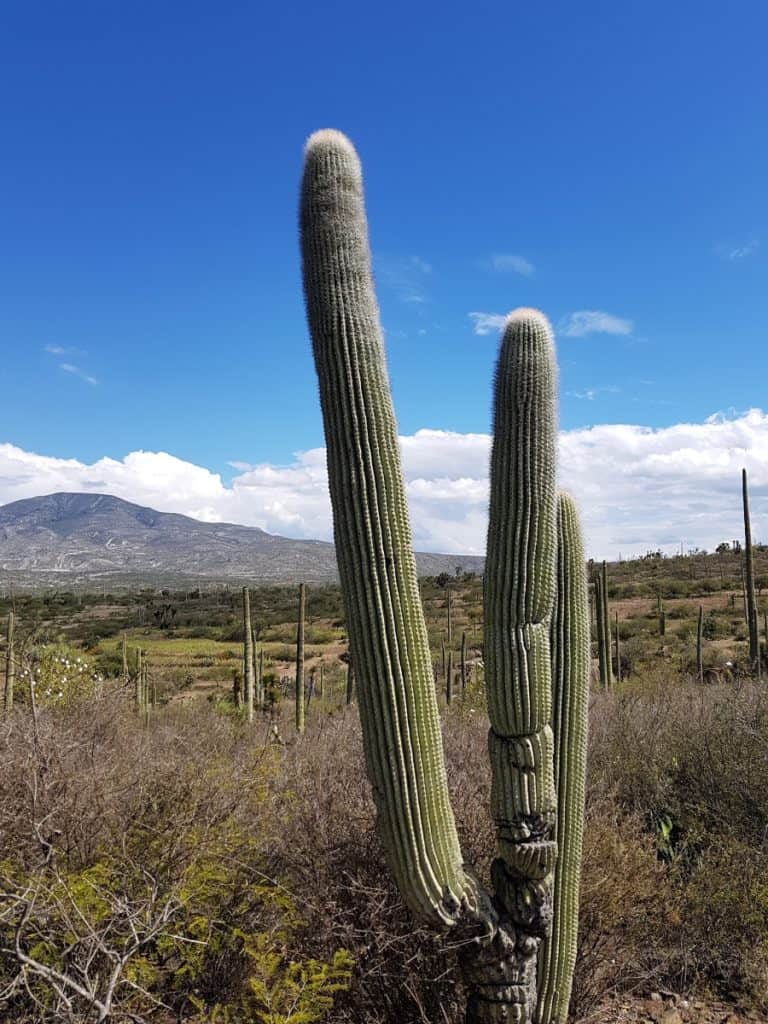
Pachycereus schottii (Whisker Cactus)
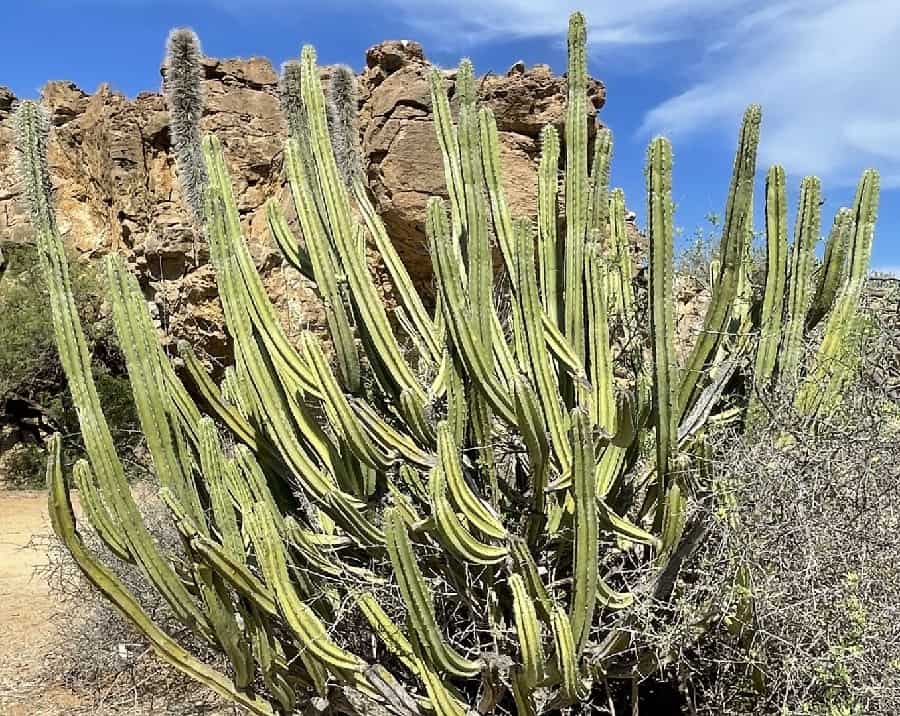
A slow-growing, usually trunkless cactus forming numerous tall, ascending, columnar stems that branch mostly at or near the base in a striking candelabra-like shape.
Pachycereus tetetzo
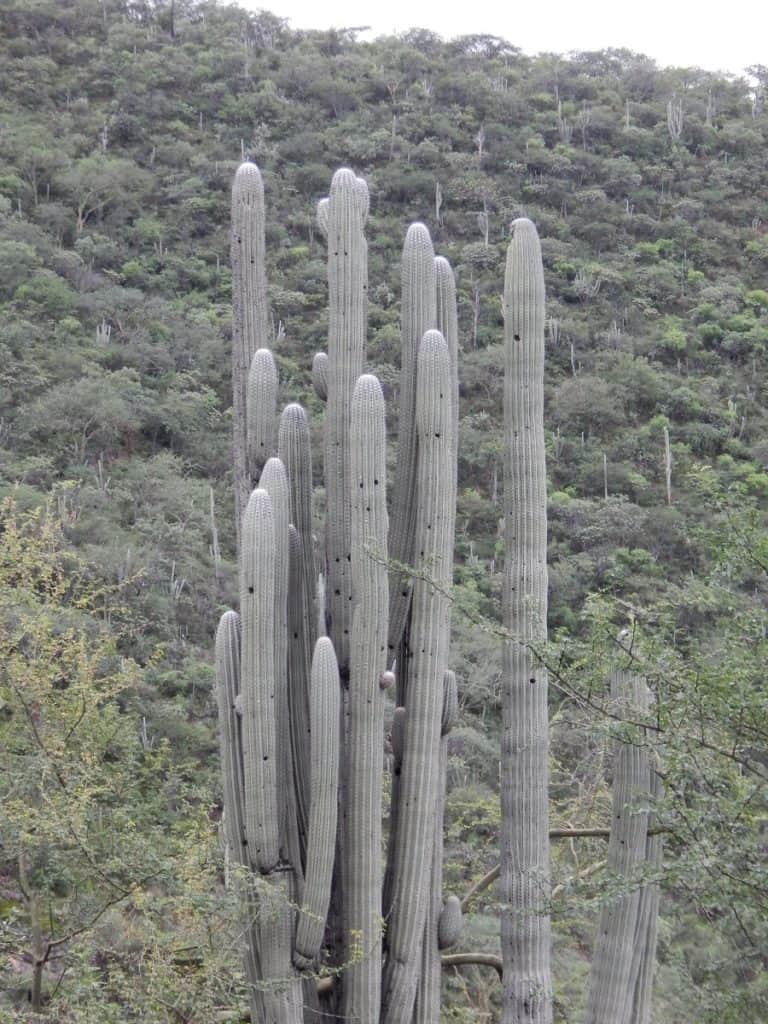
Pachycereus thurberi
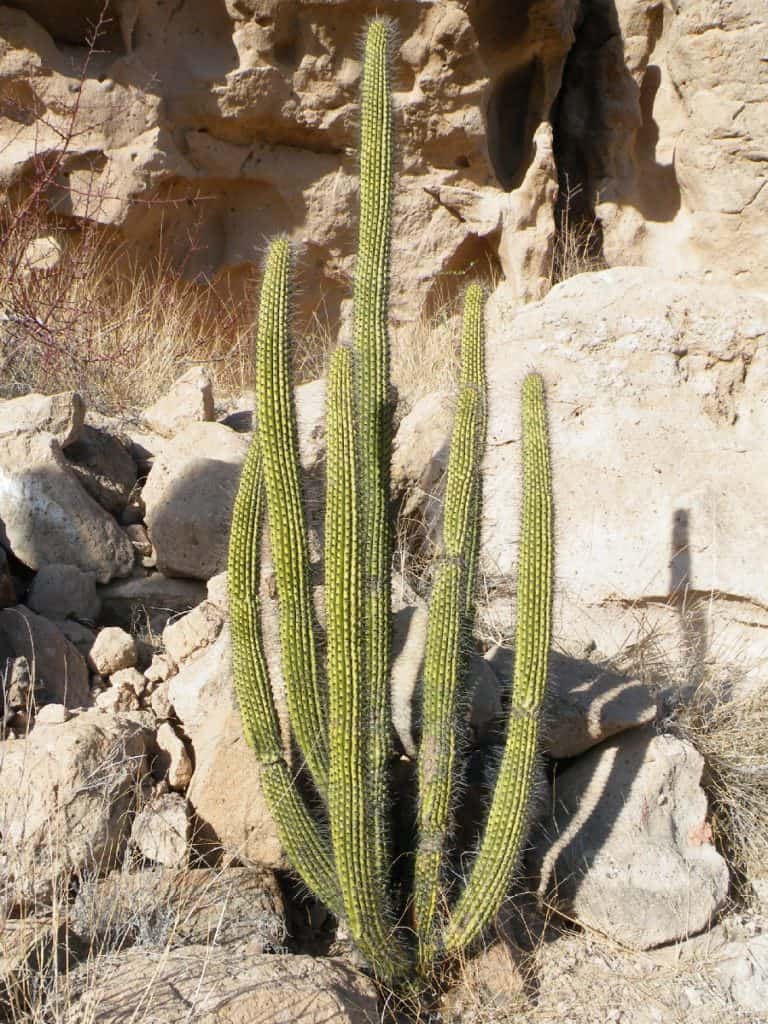
Pachycereus weberi

A massive, tree-like columnar to candelabra-shaped cactus reaching up to 36 feet high, much-branched from a large trunk up to 7 feet tall.
How to Grow and Care for Pachycereus
While their grand stature may seem daunting, Pachycereus cacti are actually relatively easy to care for at home. These visual delights also provide sheltering homes for several bird species. Best of all, you don’t need to invest too much time and resources into their growth!
Light
These cacti thrive in moderate to bright light conditions. They need plenty of light but not necessarily harsh, direct sunlight. If you live in cooler regions with less sunshine, be sure to place them near windows to maximize their light exposure. A grow light can also be used – set it on a timer for 12-14 hours per day and position it 6-12 inches away from the cactus.
During winter, they’ll do well in cool, bright rooms. Just be sure to give them some sunlight in the summer months.
Water
Stagnant, standing water is the enemy of Pachycereus cacti – they will never adapt well to it. The same goes for infrequent or irregular watering. While many succulents prefer minimal, infrequent watering, this is not the case for Pachycereus.
Watering needs will vary by season – they’ll require more frequent watering during hot summer months and less during winter. The key is never to let water accumulate around the base. Use a spray bottle to lightly mist over the entire cactus when watering.
Soil
Pachycereus love growing among rocks, easily taking root around them thanks to favorable bacteria. At home, a standard well-draining cactus/succulent potting mix will work well.
Be sure to use a mix with excellent drainage, as the cactus must never sit in pooled water or soggy soil which can cause rot. An unglazed clay pot is ideal to allow evaporation.
Fertilizer
While cacti are known for requiring minimal fertilization, you can provide a gentle nutrient boost during the growing season by diluting a cactus fertilizer or liquid tomato fertilizer in the water when misting.
Climate
Pachycereus can thrive at typical warm room temperatures as long as the air isn’t overly humid. Those in humid climates may need to use a dehumidifier, as excess moisture is something these cacti cannot tolerate.
Pests and Diseases
With well-draining soil, your Pachycereus should be relatively problem-free. However, fungal diseases like botrytis can develop if the soil doesn’t dry properly. You may also occasionally find mealybugs or small mites.
Regular yearly pruning of spent growth, along with repotting into fresh soil, can help stave off any issues. At the first sign of rot or pests, treat by spraying with an insecticidal soap or neem oil solution.
Propagating Pachycereus Cacti
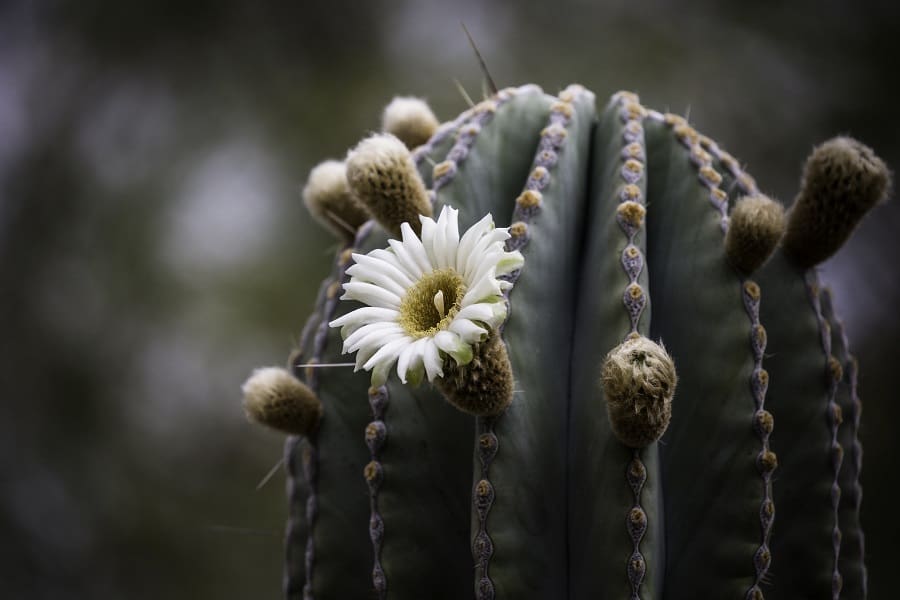
Pachycereus can be easily propagated from stem cuttings or seeds during the warm spring and summer months. It just takes a little time and patience!
From Stem Cuttings
- Take a cutting from a mature stem, slicing it off at the point where it joins the main cactus.
- Allow the cutting to callus over for 2-3 weeks by leaving it in a dry, shaded area.
- Once calloused, plant the cutting in a well-draining cactus/succulent soil mix.
- Place in bright, indirect light and wait for roots to develop over the next few weeks to months before watering.
From Seeds
- Fill a container with an appropriate seed-starting cactus mix.
- Sow the seeds by pressing them into the soil surface.
- Lightly cover the seeds with more soil mix.
- Keep the soil moist and in a warm, bright location until seedlings emerge in 2-4 weeks.
- Once sprouted, move to a sunnier spot and begin watering sparingly.
With just a little care, you’ll be able to propagate and grow your very own Pachycereus cacti!
How Fast Do Pachycereus Grow?
Pachycereus are notoriously slow-growing cacti. It can often take decades for them to reach their full, towering mature heights of 20-65 feet! However, this sluggish pace is all part of the charm – each incremental change, from new branching growth to flowering, is a true delight to witness over time.
